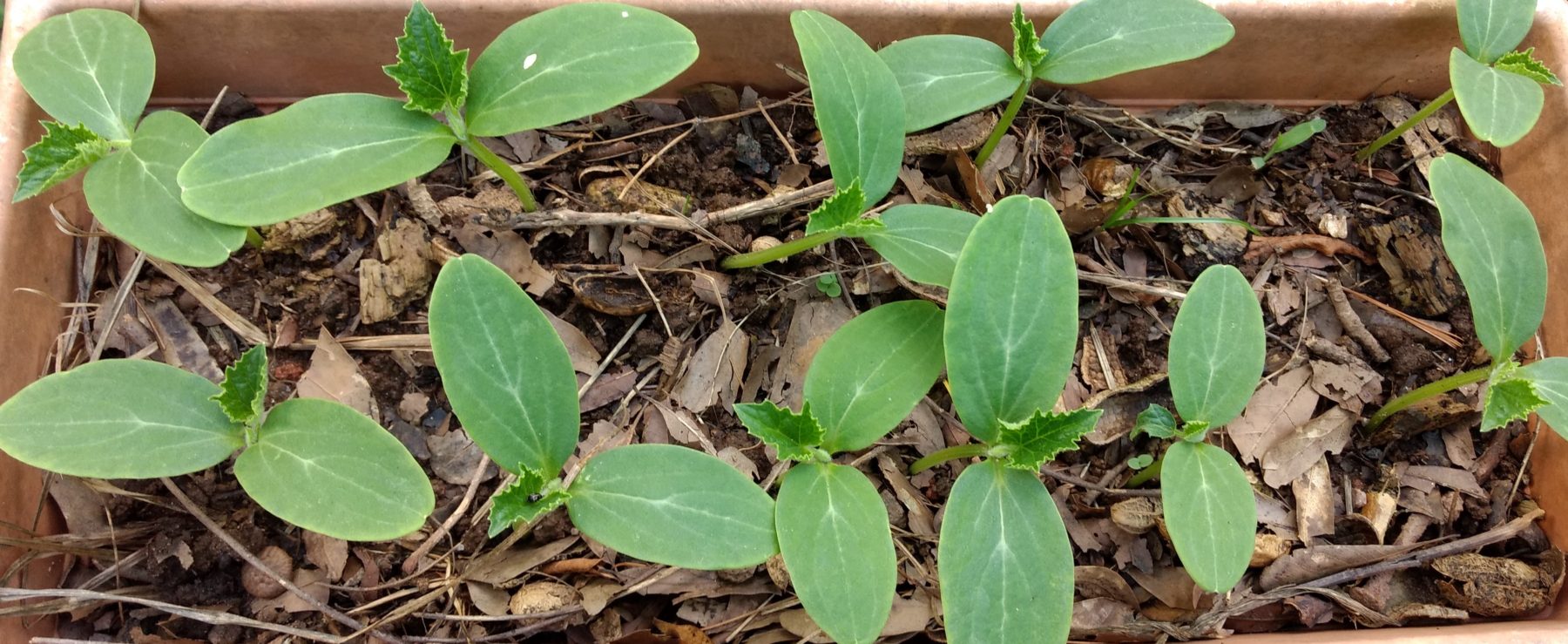Transplanting Vegetable Plants into an Organic Garden
by Sabrina Dawkins
I don’t direct sow into my organic garden because the composting organisms eat the seedlings. However, when my plants go to seed and the seeds drop to the ground, sometimes those seeds produce new plants that grow and thrive.
I plant seeds in pots consisting of garden soil, compost, some leaves, and sticks and make sure to space them in anticipation of the actual size the young plants will grow before I transplant them.
In the past I’ve made the mistake of just lazily scattering a bunch of seeds on top of the soil and compost mixture in a pot and then sprinkling some garden soil and broken-down leaves over them. Done. No need to carefully space the seeds. Well, I was horrified when seemingly every seed I had tossed in the pot sprouted. There was severe overcrowding and many seedlings remained weak and stunted because they didn’t have the space to grow. I ended up having to plant some of the larger, stronger plants into the garden to try to make room for the weaker plants to continue to grow in the pot. And I had to spread many of the remaining seedlings to several other pots to reduce the crowding even more. Only when I gave the seedlings enough space to grow did the weaker ones start to thrive. So now when I plant seeds, I anticipate that every seed will germinate and space them accordingly.
Plants need to have at least three or four true leaves before they are transplanted into the garden. But that’s not the only factor. A weak, overcrowded, small plant may have three or four true leaves but not be strong enough to survive in the garden yet. Its stem might be too skinny, its leaves too small, its height too short. A small plant needs to look robust and have the three or four true leaves, or more, before it is placed in the garden. There’s no need for me to rush to transplant weak three-leaf plants into the garden, because they would just disappear.
To prepare the spot of transplantation in the garden, I dig a hole at least eight inches deep. I can’t work hard, dry, compacted clay soil, so I usually wait until the ground is moist from a recent rain to dig in the parts of my garden that still consist of mostly clay soil. I refill the hole with garden soil, compost, and surrounding broken-down leaves and sticks formerly used as mulch. This provides a sponge and fertile growing medium for young plant roots to sink into and easy absorb water, oxygen, and nutrients.
The best water is rain water, so it’s always ideal to plant right before a rain. But a lot of rain also brings a lot of slugs in the spring that will munch on the small plants. Until the recent transplants get established, I keep a close eye on them, watering them every day if need be. After they are established, I only water them when they start to droop, and try to rely mostly on rain water.
